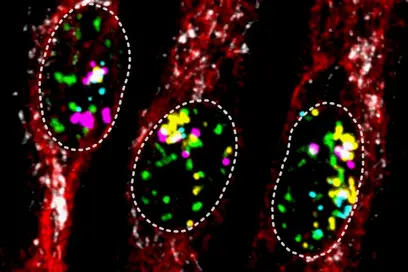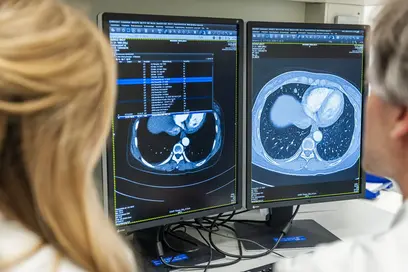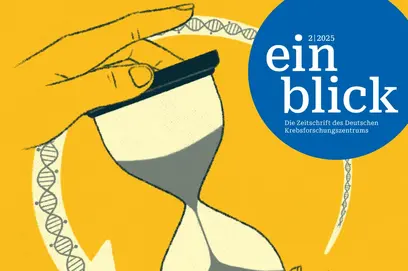Krebs heilen mit Naturprodukten - ein Fall für Schamanen und Kräuterweibchen? Keineswegs, denn viele der in der Schulmedizin verwendeten Chemotherapien gegen Krebs sind Naturprodukte oder wurden aus natürlichen Ausgangsstoffen entwickelt. So stammen die bei Prostata- und Brustkrebs eingesetzten Taxane aus der Eibe. Der beliebte Bodendecker Madagaskar-Immergrün, der viele Vorgärten ziert, liefert die Vinca-Alkaloide, die etwa bei bösartigen Lymphomen wirksam sind. Die modernen Krebsmedikamente Topotecan und Irinotecan sind Abkömmlinge eines Inhaltsstoffs des in China beheimateten “Happy Tree“.
Auf der Suche nach neuen Wirkstoffen konzentrieren sich Ärzte und Wissenschaftler zunehmend auf Stoffe aus Pflanzen der traditionellen Heilkunde. Rund drei Viertel der heute gebräuchlichen natürlichen Pharmawirkstoffe entstammen Pflanzen der traditionellen Volksmedizin in verschiedenen Teilen der Welt. Es ist wahrscheinlicher, neue Substanzen mit interessantem Wirkprofil in traditionellen Heilpflanzen zu finden als in der Feld-, Wald- und Wiesenbotanik.
Prof. Dr. Thomas Efferth aus dem Deutschen Krebsforschungszentrum konzentriert seine Wirkstoffsuche auf die Heilkräuter der traditionellen chinesischen Medizin, deren Anwendungsspektrum besonders gut dokumentiert ist. Gemeinsam mit Kollegen aus Mainz, Düsseldorf, Graz und Kunming in China startete er eine systematische Wirkstoffsuche in 76 chinesischen Medizinalpflanzen, denen Heilkraft gegen bösartige Tumoren oder Geschwulstkrankheiten zugeschrieben wird. Erste Ergebnisse dieser Studie wurden nun veröffentlicht.
Extrakte aus 18 der untersuchten Pflanzen hemmen das Wachstum einer Krebszell-Linie in der Kulturschale deutlich. “Mit dieser Erfolgsrate von rund 24 Prozent liegen wir weit über den Ergebnissen, die bei der Suche in großen chemischen Substanz-Bibliotheken zu erwarten wären“, erläutert Thomas Efferth.
Die Wissenschaftler trennten in der Folge alle wirksamen Extrakte immer weiter chemisch auf und verfolgten die wirksame Komponente nach jedem Trennschritt per Zelltest. Die chemische Struktur der Wirkstoffe wird durch Kernspinresonanz- und Massenspektroskopie aufgeklärt. “Wir kombinieren hier Naturstoffforschung mit modernsten analytischen und molekularbiologischen Methoden“, erklärt Efferth. “Besonders vielversprechend erscheinende Pflanzeninhaltsstoffe werden sofort in weiterführenden Tests untersucht.“ Dazu gehören etwa Substanzen aus dem “Rangoon-Schlinger“, einer rot blühenden Zierpflanze, oder aus dem Rotwurzel-Salbei: Letzterer enthält drei Inhaltsstoffe mit starker Antitumorwirkung. Die Substanzen hemmten das Wachstum einer speziellen Tumorzelllinie, die durch die Überproduktion eines Transportproteins in der Zellwand besonders resistent gegen viele gängige Zellgifte ist. Ein ganzes Spektrum der Standard- Krebsmedikamente dagegen versagt bei dieser Zelle.
“Von den chemisch sehr vielfältigen Naturstoffen sind viele interessante, noch unbekannte Wirkmechanismen zu erwarten. Derzeit gleichen wir die Wirksamkeit der Substanzen auf 60 verschiedene Krebszelllinien mit den Genaktivitätsprofilen dieser Zellen ab. So können wir feststellen, welche Genprodukte das zelluläre Angriffsziel für unsere Wirkstoffe sind. Damit lassen sich möglicherweise ganz neue Achillesfersen der Krebszelle aufdecken“, beschreibt Efferth das weitere Vorgehen.
Thomas Efferth, Stefan Kahl, Kerstin Paulus, Michael Adams, Rolf Rauh, Herbert Boechzelt, Xiaojiang Hao, Bernd Kaina und Rudolf Bauer: Phytochemistry and Pharmacogenomics of Natural product derived from traditional chinese medica with activity against tumor cells. Molecular Cancer Therapy 7 (1) 2008, Seite 152
Über das DKFZ
Das Deutsche Krebsforschungszentrum (DKFZ) ist mit mehr als 3.000 Mitarbeiterinnen und Mitarbeitern die größte biomedizinische Forschungseinrichtung in Deutschland. Wissenschaftlerinnen und Wissenschaftler erforschen im DKFZ, wie Krebs entsteht, erfassen Krebsrisikofaktoren und suchen nach neuen Strategien, die verhindern, dass Menschen an Krebs erkranken. Sie entwickeln neue Methoden, mit denen Tumoren präziser diagnostiziert und Krebspatienten erfolgreicher behandelt werden können. Beim Krebsinformationsdienst (KID) des DKFZ erhalten Betroffene, Interessierte und Fachkreise individuelle Antworten auf alle Fragen zum Thema Krebs.
Um vielversprechende Ansätze aus der Krebsforschung in die Klinik zu übertragen und so die Chancen von Patientinnen und Patienten zu verbessern, betreibt das DKFZ gemeinsam mit exzellenten Universitätskliniken und Forschungseinrichtungen in ganz Deutschland Translationszentren:
- Nationales Centrum für Tumorerkrankungen (NCT, 6 Standorte)
- Deutsches Konsortium für Translationale Krebsforschung (DKTK, 8 Standorte)
- Hopp-Kindertumorzentrum (KiTZ) Heidelberg
- Helmholtz-Institut für translationale Onkologie (HI-TRON) Mainz – ein Helmholtz-Institut des DKFZ
- DKFZ-Hector Krebsinstitut an der Universitätsmedizin Mannheim
- Nationales Krebspräventionszentrum (gemeinsam mit der Deutschen Krebshilfe)
Das DKFZ wird zu 90 Prozent vom Bundesministerium für Forschung, Technologie und Raumfahrt und zu 10 Prozent vom Land Baden-Württemberg finanziert und ist Mitglied in der Helmholtz-Gemeinschaft Deutscher Forschungszentren.


